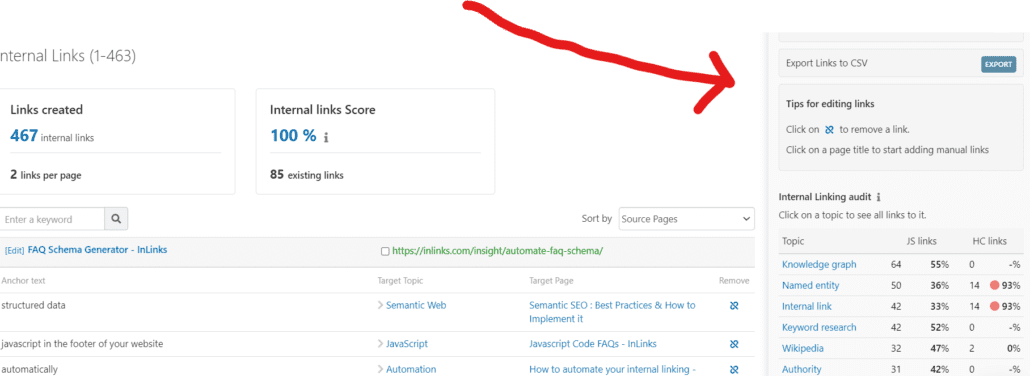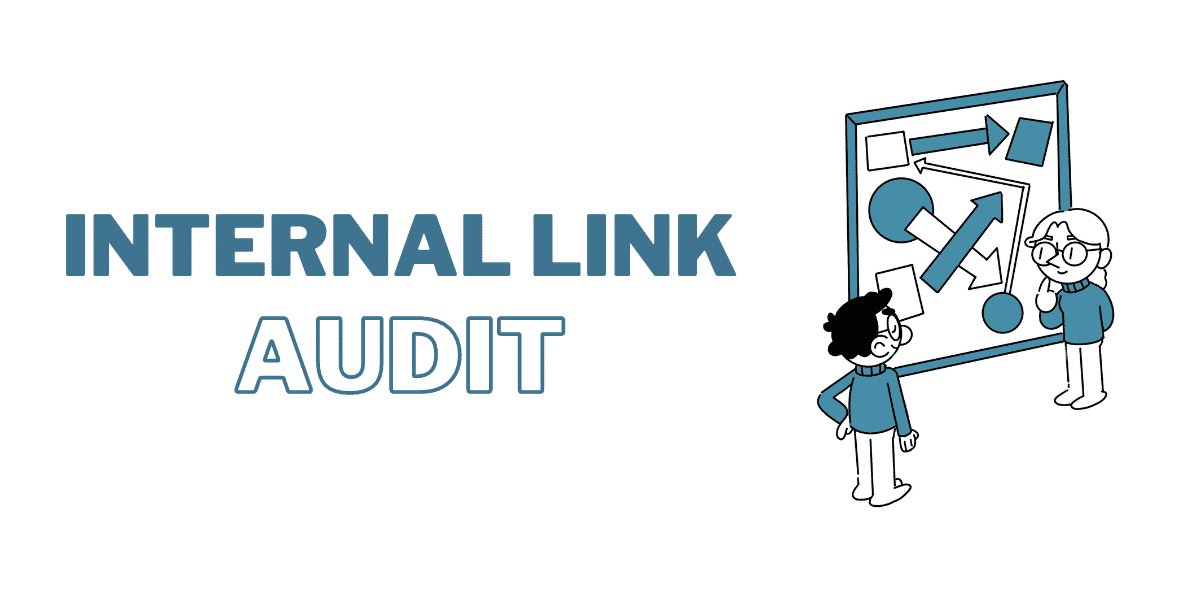Are you interested in evaluating the quality of your current internal linking structure? We’re pleased to inform you about the recent update to InLinks, which offers an internal link audit for comparing JavaScript code links added by InLinks with the hard-coded links already present on your website, all based on entities.
InLinks utilizes its own Natural Language Processing (NLP) system, leveraging a comprehensive knowledge graph. This allows the software to analyze your content, summarize it based on entities, and understand the placement of your existing internal linking anchor texts. By avoiding duplication of previous work, InLinks can determine how well you are internally linking based on the targeted entities for a given page.
For instance, let’s consider a scenario where you have a page specifically dedicated to the cost of a service. InLinks will identify various synonyms associated with this concept and evaluate the effectiveness of your internal linking in terms of anchor text diversity and accuracy.
Discover how InLinks can help you assess and optimize your internal linking strategy to enhance your website’s performance.
Why are exact match anchor texts bad?
Exact match anchor texts, although once considered a valuable SEO strategy, are now widely regarded as detrimental to a website’s search engine optimization efforts. The overuse of exact match anchor texts, which involve using the exact target keyword or key phrase as the clickable text within a hyperlink, can raise red flags to search engines and appear unnatural. Search engines like Google now prioritize user experience and context, aiming to deliver relevant and high-quality content to their users.
By relying solely on exact match anchor texts, a website risks coming across as spammy, manipulative, and lacking in diversity. Moreover, with search engines constantly evolving their algorithms, such tactics can result in penalties or even a loss in rankings. Instead, a more balanced and organic approach to anchor texts, utilizing a mixture of branded, generic, and long-tail variations, is crucial for maintaining a healthy SEO profile and enhancing the overall user experience.
How can InLinks help?
You now can see how your existing hardcoded links relate to entities, to get a better view of where you are starting in your journey to topical authority and great internal linking.
After targeting your entities, you can enter the internal linking tab and find the data here.
InLinks flags entity-based link duplication. For example, if you are always hardcoding links with exact match anchor texts then you will easily be able to see and decide on how to diversify these.
An example of an internal link audit

Here is dixonjones.com. Dixon has targeted the concepts of the internet, link-building, PageRank, etc to each of his most important pages. The red dots next to the percentage indicate that more than 80% of his links (existing) are duplicated on the topics of the internet and link building. That means that 99% of all 143 hard-coded links to do with the internet are duplicated.
InLinks will try to dilute this by finding varied anchor texts and inserting them via the JS code. Even with the small number of pages I had brought in from dixonjones.net InLinks had found 8 varied anchor texts.
Having this audit feature will show you most importantly where your problem areas are. As you continue to grow your site and it is great to have an overview of undiversified, problematic entities.
How can I do this myself?
To get started, bring in all of your sites and start targeting topics to pages. We have plenty of support on how to do this on the Inlinks Academy.
Once you are set up, head over to the internal linking tab and find this information on the right hand side. Clicking on this will meant that you will be able to see the exact placement and text of the existing hard-coded links.

In conclusion, InLinks has introduced a valuable feature that enables users to evaluate the quality of their existing internal linking structure. By comparing the added JavaScript code links from InLinks to the hard-coded links already present on a website, users can assess the effectiveness of their internal linking efforts. InLinks leverages its own NLP capabilities, informed by a knowledge graph, to analyze and summarize content based on entities. This allows for a comprehensive understanding of internal linking anchor texts and helps optimize their diversity and accuracy.
While exact match anchor texts were once popular, they are now considered detrimental to SEO. Search engines prioritize user experience and context, making a balanced and organic approach to anchor texts crucial. InLinks’ internal linking audit feature assists in identifying areas for improvement and offers insights into problematic entities. By utilizing this tool, website owners can gain a clear overview of their internal linking strategy and optimize it for better search engine rankings and user engagement.





Leave a Reply
Want to join the discussion?Feel free to contribute!